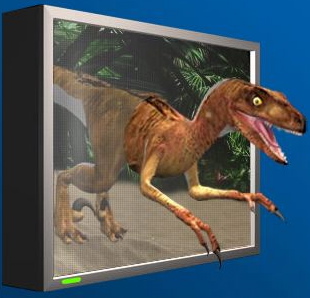3D, Mobile TV and Teletext

LAS VEGAS: Standards are wonderful. Unfortunately, a standard does not a business make. It might be worth keeping that in mind on the NAB show floor this year.
Back in 1941, a standard did create a business--the business of television broadcasting.
Perhaps that’s why there’s a lot of buzz about some newer standards at NAB 2009. One would cover mobile-and-handheld transmissions from U.S. digital-TV broadcasters. Another would provide parameters for stereoscopic 3D TV.

In a tough economic environment, both mobile and 3D are seen as possible paths to salvation. Of course, that’s this year, at NAB 2009.
Twenty-five years ago, the buzz at NAB was about a different new standard, NABTS, the North American Broadcast Teletext Standard, to be used in such TV broadcaster money-making propositions as CBS ExtraVision. Today one might well ask, “What’s teletext?” But, even in 1984, that would have been the typical response of a consumer told of the video text-delivery service.
That’s not the only standard that didn’t transform the industry. For some more-recent examples, take a look at the ATSC.
The first ATSC standard wasn’t for digital television; it was for ghost cancellation. It could have improved analog pictures tremendously. Unfortunately, it was never widely adopted.
Then there are the ATSC digital television standards, specifically those relating to audio. Last month, Dolby announced a new “multistream” audio decoder. Although some U.S. outlets picked up the story, the new product is actually aimed at Europe. There’s a sad reason for that.
The audio portion of the U.S. digital television standard is quite wonderful. It allows broadcasters to transmit user-selectable commentary channels. You could watch a football game and hear the announcer who’s rooting for your team. Or watch a science show with beginner, intermediate, or advanced commentary. Or get election-night coverage slanted to the candidate you favor.
It also allows broadcasters to transmit different languages of dialogue simultaneously, each in surround sound, without having to use up too much data rate. Similarly, descriptive audio could be added to a full surround-sound mix with just a tiny data stream.
All of those things are available in the standard. Unfortunately, none of them is available to consumers, because no U.S. TV sets or digital receivers include the necessary multistream audio decoders. And, because those functions aren’t available to consumers, they’re not available to broadcasters, either.

The cost to a manufacturer to add multistream audio decoding might have been a few cents, including licensing fees. But it was not to be.
Now there are 3D and mobile. Both are exciting. But both have issues that go beyond standards.
When we look at the stars, for example, our eyes point straight ahead, roughly 2.5 inches apart. So, reproducing that effect on a 3D screen requires the left- and right-eye images of the stars to be roughly 2.5 inches apart, too.
That’s easy to achieve on almost any screen. But a single TV signal serves screens of many sizes. What’s 2.5 inches apart on a 30-inch screen is an eye-diverging, nausea-inducing five inches apart on a 60-inch screen. On a 15-inch screen, however, it’s a mere 1.25 inches, bringing the stars a lot closer to the viewer.
As for mobile TV, one problem with even a broadcast-industry-wide standard is that we are not alone. TV has been delivered to mobile devices for years via technologies having nothing to do with television broadcasters.
Then there’s mobile-TV content, not as simple as repurposing ordinary broadcasts. The mobile-device version of the popular Fox series 24 had many more close-ups, bigger bullet holes, louder effects, and much more blood crammed into much shorter episodes.
New technology often looks promising. But promises aren’t always kept. -- Mark Schubin
(Creative Commons images by : Cover and second from top, Mark Wallace; bottom, Stanislav Stankovic)
Get the TV Tech Newsletter
The professional video industry's #1 source for news, trends and product and tech information. Sign up below.
